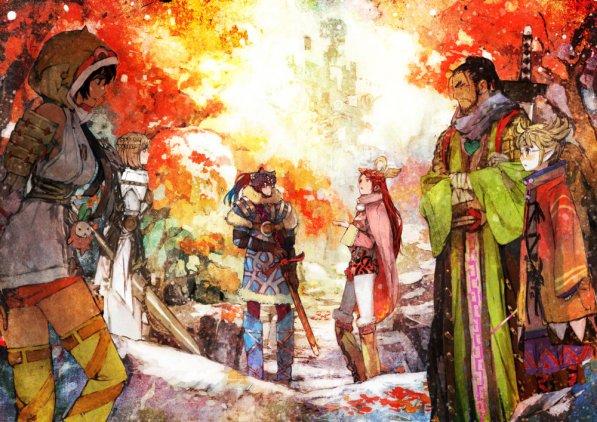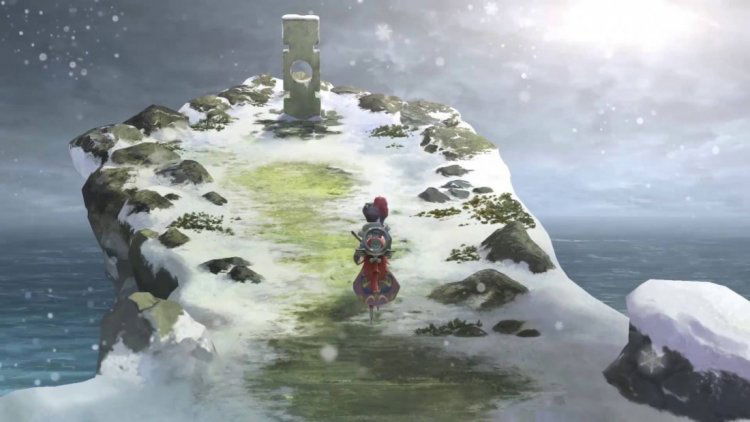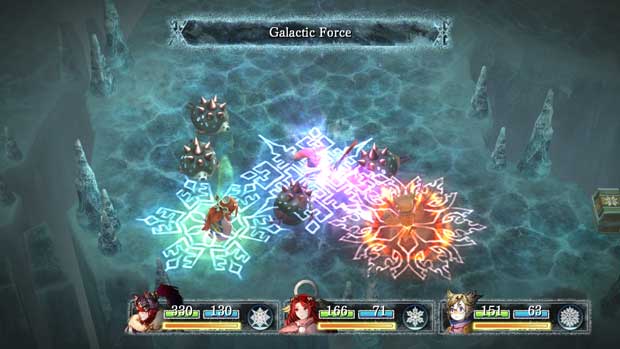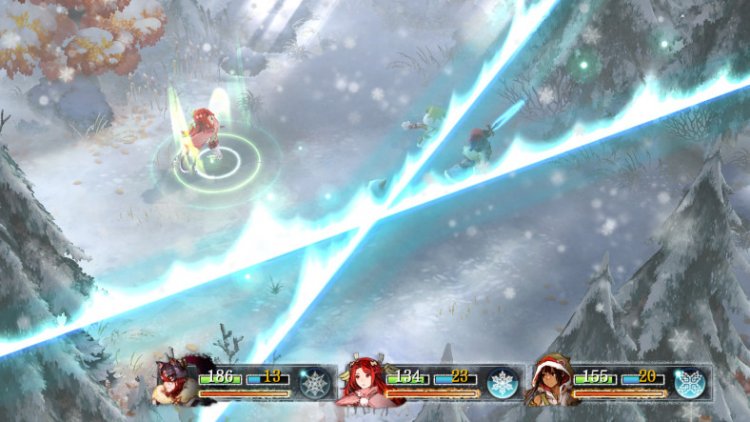When playing I Am Setsuna, Tokyo RPG Factory asks players to take their hand and go on a journey back through time. They seek to evoke memories of treasured games of old and tug on heart strings. At times, this journey can come dangerously close to pulling back that curtain on the great and powerful Mr. Oz, revealing shortcomings not readily apparent in the 90s. However, I Am Setsuna succeeds in its goal despite almost falling on its face, and I couldn’t be more happy about that.
Game Name: I Am Setsuna
Platform(s): PS4 (Reviewed), PC, Vita (Japan Only)
Publisher(s): Square Enix
Developer(s): Tokyo RPG Factory
Release Date: 7/19/2016
Price: $39.99 USD
A New World for the Classic Formula
Tokyo RPG Factory has been very up front with the fact that they are drawn heavily from the Chrono Trigger well for inspiration. Their debut features a silent protagonist, lack of random encounters, and an ATB-styled turned based battle system featuring combos. The parallels go further, but to speak of them would enter spoiler territory. However, the mark of other games can be felt with many musical cues, melodies, and even story beats sounding eerily reminiscent. The biggest example is probably the fact that the game’s plot follows the story of a young girl, Setsuna, set on a pilgrimage to sacrifice herself to save mankind. Sound familiar?
Thankfully, rather than copy and paste select elements of successful JRPGs, I Am Setsuna chooses to build on them. For starters, the world in which the game takes place is totally unique visually and in tone. Snow blankets everything, and the theme of sorrow penetrates every subplot and set of dialogue. Fortunately, the depressing tone never wears on the player, as Tokyo RPG Factory is always sure to add a bit of levity when proper and to keep an ever-present sense of hope on the character’s minds. These moments come via your party members, who are all a joy and have interesting backgrounds. In fact, these subplots are perhaps the best parts of the game. They represent both good character writing and great metaphors for the larger issues of the plot.
Endir, the protagonist, is the only exception. He is mute, save the occasional dialog option. But with no real impact on the game, the choices are meaningless and he has no real development in stark contrast to his comrades. While the intent is to harken back to the heroes of classic gaming, it would have served the story better had Endir been a real character. The overall tale shines through this, however, with a strong message and some good twists and turns. I’d even argue that it’s stronger than that of Final Fantasy X, from which it draws its premise.
The consistency of the world is important in maintaining the tale’s mood, yet at times it can detract from the experience. While the aesthetic design of it is beautiful, the player can’t help but notice that each village and dungeon in the world of I Am Setsuna seems to shop at the same local IKEA. No particular area really gets its own visual identity, as the character models, buildings, furniture, and textures are all the same. Thankfully, the game clocks in at around the 15 hour range, as it all bordered on becoming monotonous. Again, another weakness of the beloved formula is the need for variety, even if for its own sake.
Who Said Taking Turns is Outdated?
One part of that formula that is timeless, despite those who’d try to argue otherwise, is the ATB battle system. It works just as well here as it did in the 90s, and Tokyo RPG Factory wisely chose to avoid random encounters and place enemies on the map. Equipping different techs to your characters and experimenting with lineups for combo attacks is also just as fun. I Am Setsuna builds on this system by adding a “Momentum” meter, which builds when the ATB meter is filled. Filling this meter adds points which can be spent via timed button presses during attacks to enhance your techs. It’s a good risk/reward system overall. Many techs, though, feel almost useless without the use of Momentum for added effect. At the end of the day, the system can feel like more of a necessity than a choice.
Additionally, the game sports a “Flux” and “Singularity” system. The former are Materia-like mods to your techs and the latter is some kind of random buff system. Neither system is sufficiently explained, and quite frankly, neither impacts the game much. The mechanical balance issues extend to the overall pacing of the game, where I felt the game bordered on too easy for a while, then spiked greatly in difficulty before settling at a good spot towards the end. Note that never once did I engage in “the grind”, and while jarring, the increased difficulty was welcome if uneven. Thankfully, none of these issues affected my overall enjoyment that much, though they threatened to.
An aspect of the game, while small, that did ruin my experience at times was the save system. Like most old-school JRPGs, I Am Setsuna utilizes a system where progress can only be saved on the world map and at designated locations. However, I can only recall actually seeing a save point maybe five or six times throughout the entire game. I couldn’t even save in quiet towns. Therefore, the world map became my only reliable save point.
With stretches lasting a good few hours where neither the map or a designated point were available, there were points at which a dumb mistake set me back hours. One instance wasn’t even due to a battle, but an incorrect dialogue choice. There isn’t even a checkpoint system for surprise boss encounters. At times, I simply had to step away and leave my console on for hours because of real world responsibilities. Some might believe this to be a “hardcore” relic of classic gaming. However, without an inherent design purpose, it is just as frustrating as it was in the 90s. At least back then there were technical limitations to excuse it.
Summary
Micro-rants aside, I Am Setsuna has it where it counts. Despite the cracks that give a small peak at the shortcomings of an old formula, its well-told story, fun characters, and addictive combat win the day. Much credit also goes to the absolutely gorgeous soundtrack by Tomoki Miyoshi (I’m listening to it right now on Spotify). Done entirely in piano, it perfectly captures the tone of the story and world and truly draws you in that much further. As a huge fan of gaming soundtracks, I would say Mr. Miyoshi’s work here rivals that of Uematsu. As a huge fan of RPGs, I cannot express the joy I felt when I had to wander the first town and speak to NPCs to find out what was going on rather than follow a giant arrow. I cannot convey how happy I was that I was playing a game where characters rub monster droppings on themselves to stay safe in the wilderness. In an industry now home to motion capture and Hollywood voice acting, I found great solace in reading a conversation.
Pros
- Well told story
- Fun and interesting characters
- Combat is pure bliss
- Soundtrack is an instant classic
-
Cons
- Protagonist is just…there
- While beautiful, the world can get a bit boring by the final hours
- Save system can be frustrating as hell
- Mechanics and difficulty could have used a bit more fine tuning
-
Like Going Home and Eating Mom's Chicken and Potatoes





